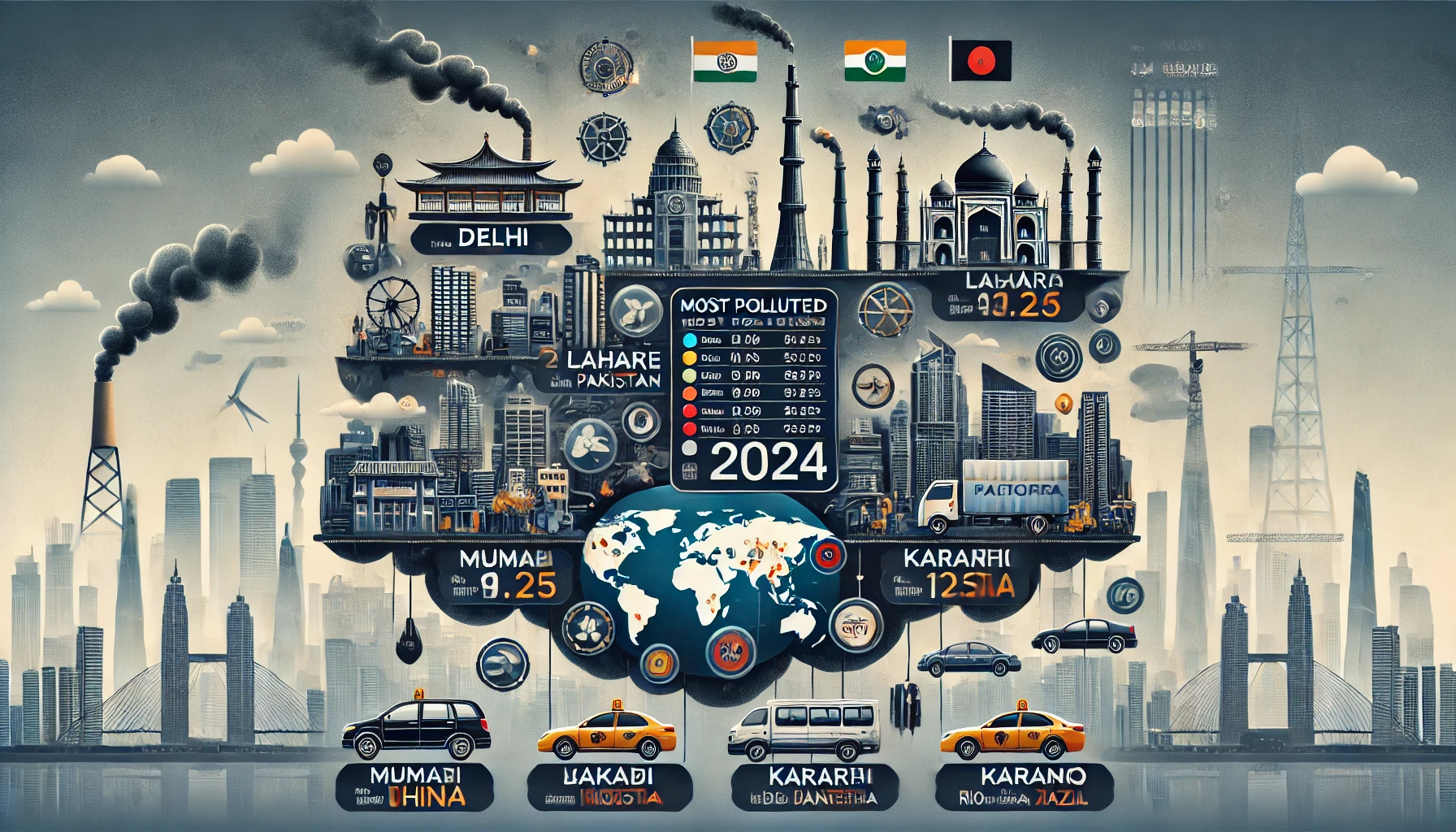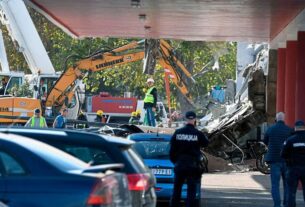As environmental concerns continue to escalate, a new report has revealed the rankings of the world’s ten most polluted major cities for 2024. The data, compiled by air quality monitoring organizations, highlights the alarming levels of air pollution affecting millions of residents and emphasizes the urgent need for effective environmental policies and interventions.
Key Findings
Delhi, India: Retaining its position as the world’s most polluted city, Delhi faces severe air quality issues primarily due to vehicle emissions, industrial discharges, and construction dust. The average PM2.5 concentration reached 126 µg/m³, significantly above the World Health Organization’s (WHO) safe limit of 10 µg/m³.
Lahore, Pakistan: Coming in second, Lahore’s air pollution has worsened due to a combination of traffic congestion, industrial emissions, and seasonal crop burning. The city recorded an average PM2.5 level of 121 µg/m³.
Dhaka, Bangladesh: Dhaka, with its rapidly growing population and unregulated industrial activities, ranked third. The average PM2.5 concentration was measured at 117 µg/m³, contributing to serious health issues among its residents.
Mumbai, India: India’s financial capital, Mumbai, continues to struggle with air quality, placing fourth with a PM2.5 level of 113 µg/m³. The city’s pollution is exacerbated by vehicular emissions, construction activities, and maritime traffic.
Ulaanbaatar, Mongolia: Known for its harsh winters and reliance on coal for heating, Ulaanbaatar ranked fifth. The city reported an average PM2.5 concentration of 105 µg/m³, making air quality a significant health concern for its inhabitants.
Beijing, China: Despite efforts to combat pollution, Beijing remains on the list, ranked sixth. The city recorded an average PM2.5 level of 99 µg/m³, primarily due to industrial emissions and vehicle exhaust.
Jakarta, Indonesia: Jakarta’s rapid urbanization and industrial growth have led to its position as the seventh most polluted city, with a PM2.5 level of 95 µg/m³. The city faces challenges related to waste management and air quality regulation.
Hanoi, Vietnam: Hanoi ranks eighth, with an average PM2.5 concentration of 92 µg/m³. Traffic congestion, industrial activities, and construction dust contribute significantly to its air quality problems.
Karachi, Pakistan: Karachi, with its large population and industrial base, ranks ninth, reporting a PM2.5 level of 89 µg/m³. Efforts to improve air quality are ongoing, but challenges remain.
Rio de Janeiro, Brazil: Finally, Rio de Janeiro rounds out the top ten, with an average PM2.5 concentration of 86 µg/m³. Urban pollution and vehicular emissions contribute to the city’s air quality challenges.
Implications
The rankings serve as a wake-up call for policymakers and citizens alike. High levels of air pollution pose significant health risks, including respiratory diseases, cardiovascular issues, and increased mortality rates. Governments in these cities must prioritize environmental reforms, invest in clean technologies, and promote public awareness campaigns to combat air pollution effectively.
Conclusion
As we move further into 2024, the rankings of the world’s most polluted major cities highlight the urgent need for coordinated efforts to address environmental challenges. With millions of lives at stake, it is crucial for governments, organizations, and communities to work together to improve air quality and protect public health.
ARY News, GEO News, Dawn News, ABC News, CBS News.





